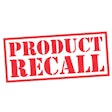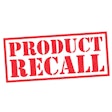
Producers face recalls when metal fragments elude safety inspections and end up in pet foods. To avoid both financial and reputational costs, pet food manufacturers must prevent contamination by metal pieces. William Grand, founder and CEO of pet food ingredient supplier NutriFusion, discussed the best practices for detecting and eliminating metal contaminants from pet food products.
Detecting and removing metal contaminants
Metal detectors are the cornerstone of contamination prevention in pet food production.
"Every production line dealing with food, whether it’s for pets or humans, uses or should have metal detectors," Grand said.
These detectors come in various types and are effective at identifying metal contaminants. When metal is detected, alarms immediately alert the operators, ensuring swift action can be taken to address the issue. Given the high speed of production lines, visual inspections are impractical, making these detectors the most reliable method for ensuring product safety.
Common sources of metal fragments and preventive maintenance
Understanding the common sources of metal fragments improves prevention.
"Anything with moving parts has the potential to break," Grand said.
This includes gears and other mechanical components. If gears are slightly misaligned, they can cause grinding that produces fine metal fragments. More significant breakages will trigger alarms and shut down the production line to prevent further contamination. Preventive maintenance helps mitigate these risks.
"Continual maintenance and regular check-ins for the system are not just helpful; they are crucial in preventing future issues," Grand said.
Effective quality control involves trained personnel monitoring machinery. This proactive approach helps ensure that potential issues are identified and addressed before they lead to contamination.
Industry best practices for quality control
The pet food industry has a commendable track record in managing metal contamination risks, he said. Regular maintenance schedules and thorough inspections are integral parts of this success. By prioritizing these practices, manufacturers can significantly reduce the likelihood of metal fragments entering the food supply.
"These manufacturing lines need to be monitored and controlled,” he said. “If metal fragments are in the food system, metal detectors need to work where they are caught, and production needs to be shut down. The bad area needs to be isolated, and the product needs to be disposed of.”
This stringent approach reduces the potential for contaminated products to reach consumers, protecting the health and safety of pets.

















